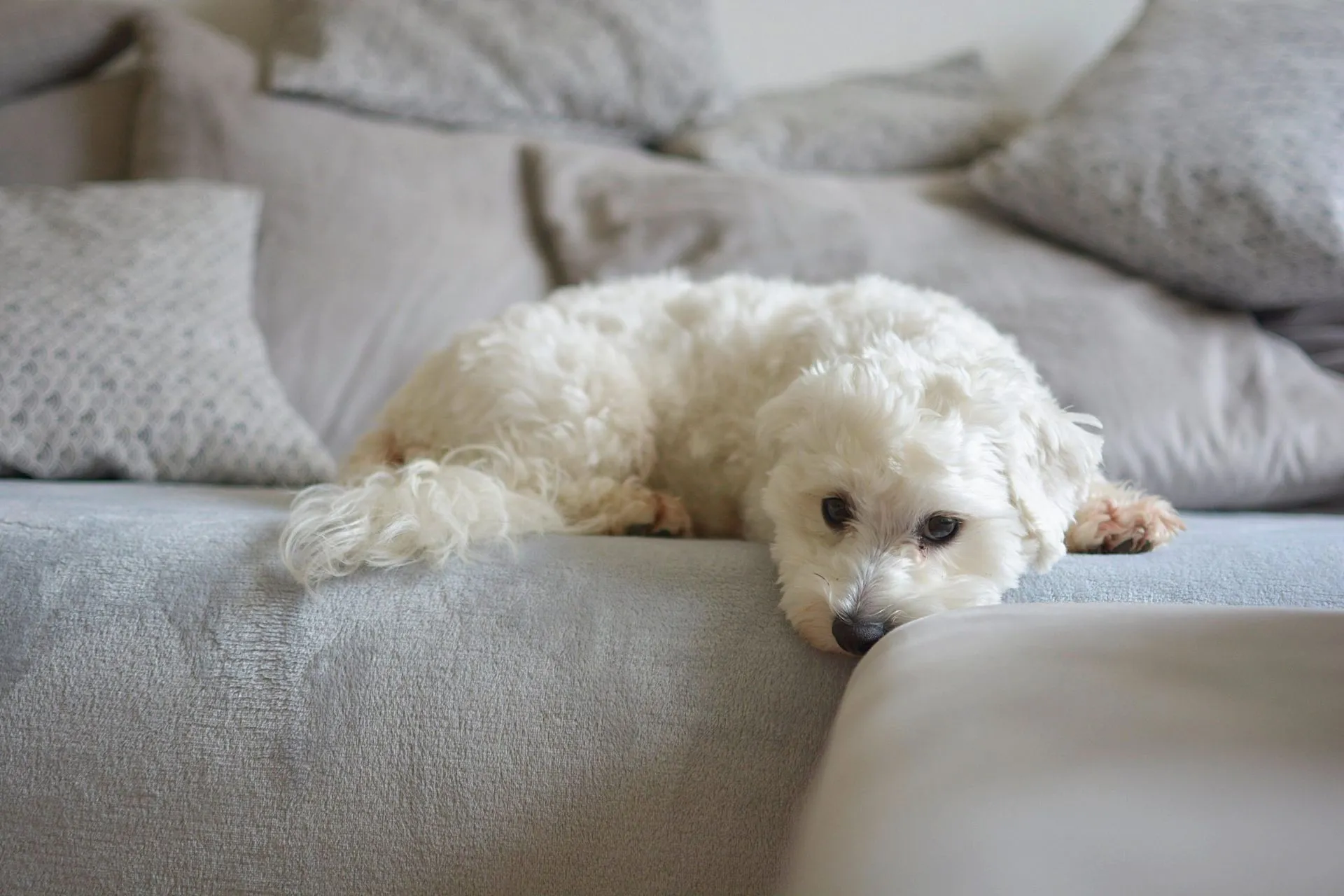Many dog owners cherish the bond they share with their pets, often including them in family activities, even on the sofa. While some enjoy a cuddle with their canine companion, others prefer to keep furniture dog-free, especially when guests are over or after a muddy walk. The challenge then becomes teaching your dog that the sofa is off-limits without making them feel excluded. This article provides practical, expert-backed advice on How To Stop Dog Jumping On Sofa, guiding your furry friend towards their own comfortable spot on the floor.
Establishing boundaries with your dog is a crucial part of responsible pet ownership. It’s not about being harsh, but about clear communication and consistent expectations. While unwanted behaviors like managing dog howling when alone or jumping on people might seem different from sofa surfing, they all stem from a need for clear guidance and training. The methods discussed here are built on positive reinforcement and decades of experience, ensuring a happy dog and a harmonious home.
 *A dog resting on a sofa, illustrating the common scenario many owners face.*
*A dog resting on a sofa, illustrating the common scenario many owners face.*
Five Steps to Keep Your Dog Off the Sofa
1. Make Sure Your Dog Has a Designated Bed
One of the most fundamental steps in teaching your dog to stay off the sofa is providing them with an attractive alternative. Every dog, especially those allowed indoors, should have their own comfortable bed or designated ‘place’ in each area of the house where they spend time. This gives them a clear signal of where they are allowed to settle, be calm, and relax.
When moving between rooms, consider bringing their bed with you. By doing so, you can guide your dog to their bed and issue a clear command such as “in” or “place.” This helps reinforce that their bed is their designated spot. If your dog attempts to leave their area or jump on the sofa for attention, use a “leave” command, accompanied by a hand direction towards their bed. Consistent practice will help your dog understand these commands and associate their bed with a positive, calm experience. For instance, the skills learned in introducing a leash to your puppy can also build a foundation for understanding commands and boundaries.
2. Revisit Foundational Training If Your Dog Doesn’t Do as You Ask
If your dog isn’t responding to your commands, it simply means they haven’t fully grasped the instructions. This is a common hurdle, and it indicates a need to revisit the foundational stages of their training. Rather than getting frustrated, view this as an opportunity to reinforce their learning.
A successful routine involves showing your dog exactly what you expect. For example, when entering a lounge area, hold your dog’s bed, ask them to sit, then place the bed in the desired spot. Call your dog to their bed (individually if you have multiple dogs), and reward them immediately with a treat for settling in. This repeated positive association teaches your dog that their bed, regardless of its location, is a good and rewarding place to be. This approach is similar to the patience and consistency required for more complex tasks like training a puppy for therapy work.
 *A cute Cocker Spaniel puppy comfortably napping in its bed.*
*A cute Cocker Spaniel puppy comfortably napping in its bed.*
This strategy also proves incredibly useful when traveling. If you’re staying in a hotel or visiting friends and family, bringing your dog’s bed or even a familiar mat can provide them with a sense of security and a clear understanding of their designated space. This reduces anxiety for your dog and helps maintain consistent behavior, ensuring everyone is comfortable.
3. Letting Your Dog Have Their Own Way Will Make Them More Disobedient
Inconsistency is the enemy of effective dog training. If you allow your dog on the sofa sometimes, but not others, you create confusion. Your dog will begin to expect to be on the sofa, rather than waiting for an invitation. This lack of clear boundaries can lead to a broader pattern of disobedience. Dogs thrive on routine and predictability; when rules are ambiguous, they’re more likely to test limits in various situations.
Consider how your dog interacts with different family members. If one person is lax with sofa rules, the dog may show less respect for that person’s boundaries in other areas, such as during walks or when food is present. This demonstrates that consistency across all household members is vital for reinforcing good behavior. A dog that understands and respects your boundaries on the sofa is more likely to be well-behaved in general, whether it’s improving recall with older dogs or simply following basic commands.
4. How to Keep a Dog Off the Sofa If You’ve Always Allowed It? Practice, Practice, Practice
Changing an established behavior, particularly one that has been allowed for a long time, requires dedication and consistent effort. If your dog has grown accustomed to lounging on the sofa, retraining them will take time and repetition. This is especially true if you’re making the change for specific reasons, such as wanting to enjoy a meal in peace or preparing for guests.
The ideal scenario involves directing your dog from the sofa to their bed with a clear command like, “Bertie, in!” If your dog is reluctant to move, it’s crucial they understand their name and associate following the command with a positive outcome, like a reward or praise. Just as with any new skill, regular practice of this new routine is essential for achieving the desired results. Consistent reinforcement will help your dog unlearn the old habit and embrace the new one.
 *A dog intently watching a treat, demonstrating focus during training.*
*A dog intently watching a treat, demonstrating focus during training.*
5. If They’re Too Excitable to Listen to Commands, Accept That They’re Not Ready for This Stage of Training
Sometimes, a dog might be too over-stimulated or excited to effectively receive and respond to commands. If your dog is excitedly jumping between their bed and the sofa, or running around, it’s a clear indication that they’re not yet in the right mindset for training in that particular environment, especially if there are other people, food, or distractions present.
In such cases, it’s best to restart the process in a calmer, less stimulating setting. Use their bed as the focal point. When your dog is calmly sitting in their bed, place a food reward on the floor next to it, giving them a clear reason to remain settled and focused. Periodically, walk past their bed and offer another treat or praise. The visible reward helps establish their bed as a positive place, teaching them to ignore distractions because they understand that staying in their designated spot leads to a reward. This method builds patience and self-control, which is fundamental for any training, including preparing your dog for therapy roles.
As your dog becomes accustomed to this routine over time, they will happily go to their bed and stay there for extended periods, knowing that a reward — whether it’s a treat, praise, or a gentle ear scratch — will always be forthcoming.
Conclusion
Teaching your dog to stay off the sofa is a common training goal that requires patience, consistency, and clear communication. By providing a comfortable alternative, revisiting foundational training when necessary, maintaining unwavering consistency, practicing regularly, and understanding when your dog is ready to learn, you can successfully guide your dog to respect boundaries. Remember, the aim is not just to keep them off the furniture, but to foster a well-behaved, respectful, and happy companion within your home. These techniques, rooted in positive, reward-based methods, ensure a harmonious living environment for both you and your beloved pet.
For more detailed advice on positive, reward-based training methods, one-to-one training sessions, or residential training, you can explore resources such as Ben Randall’s proven BG training methods.
